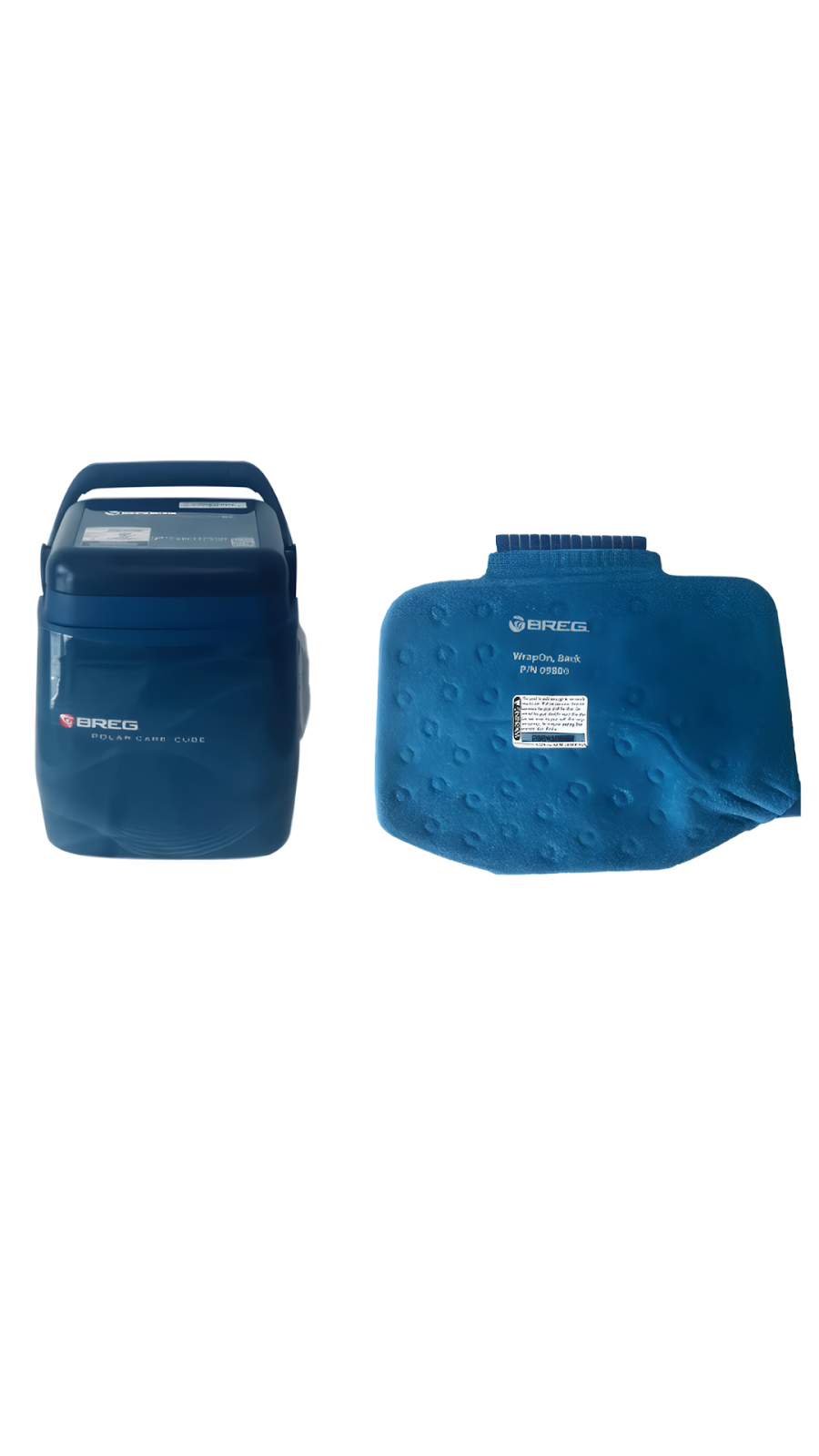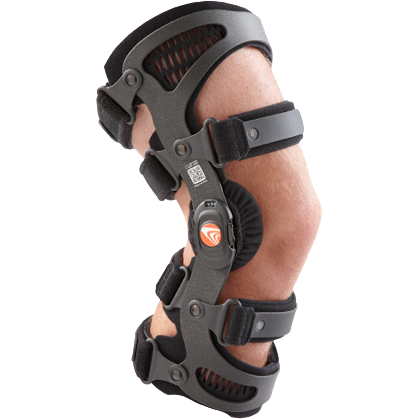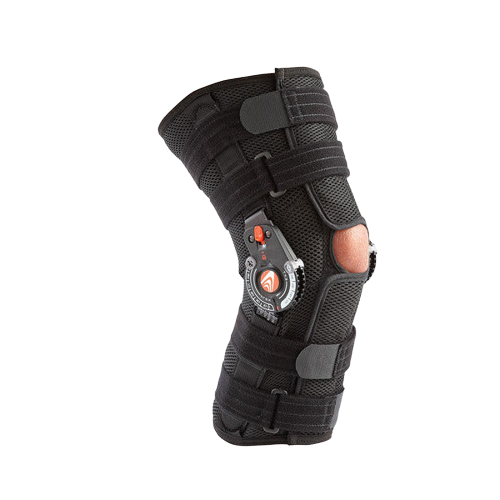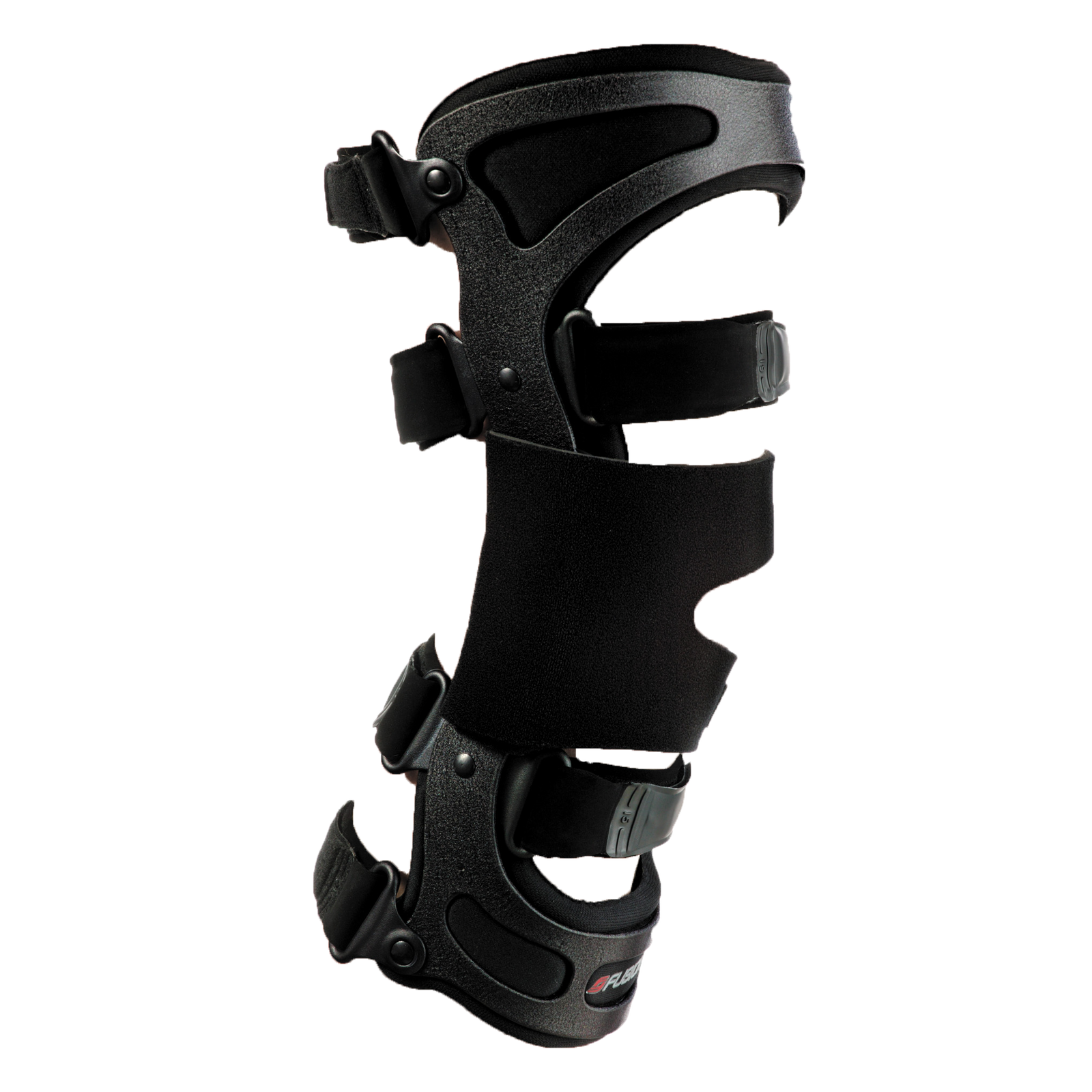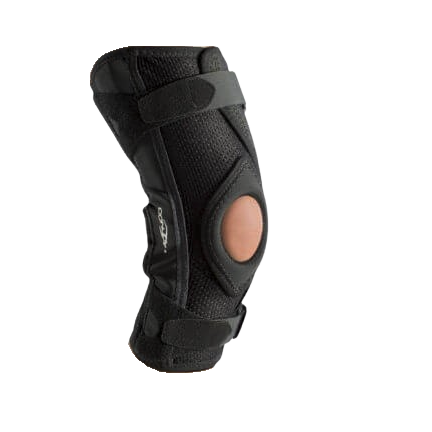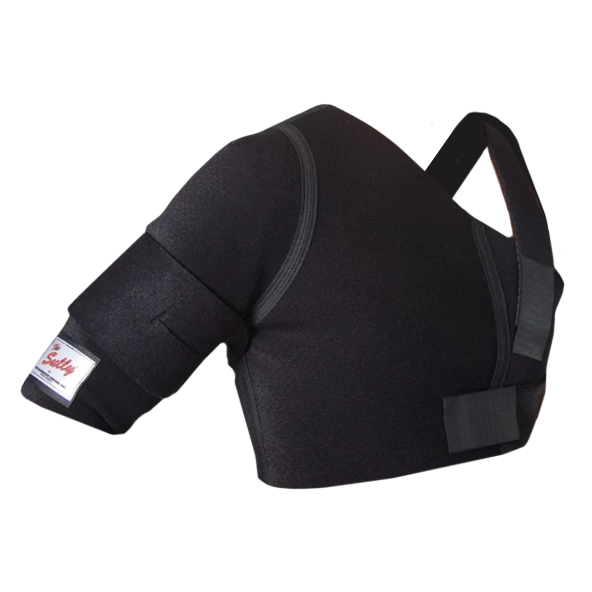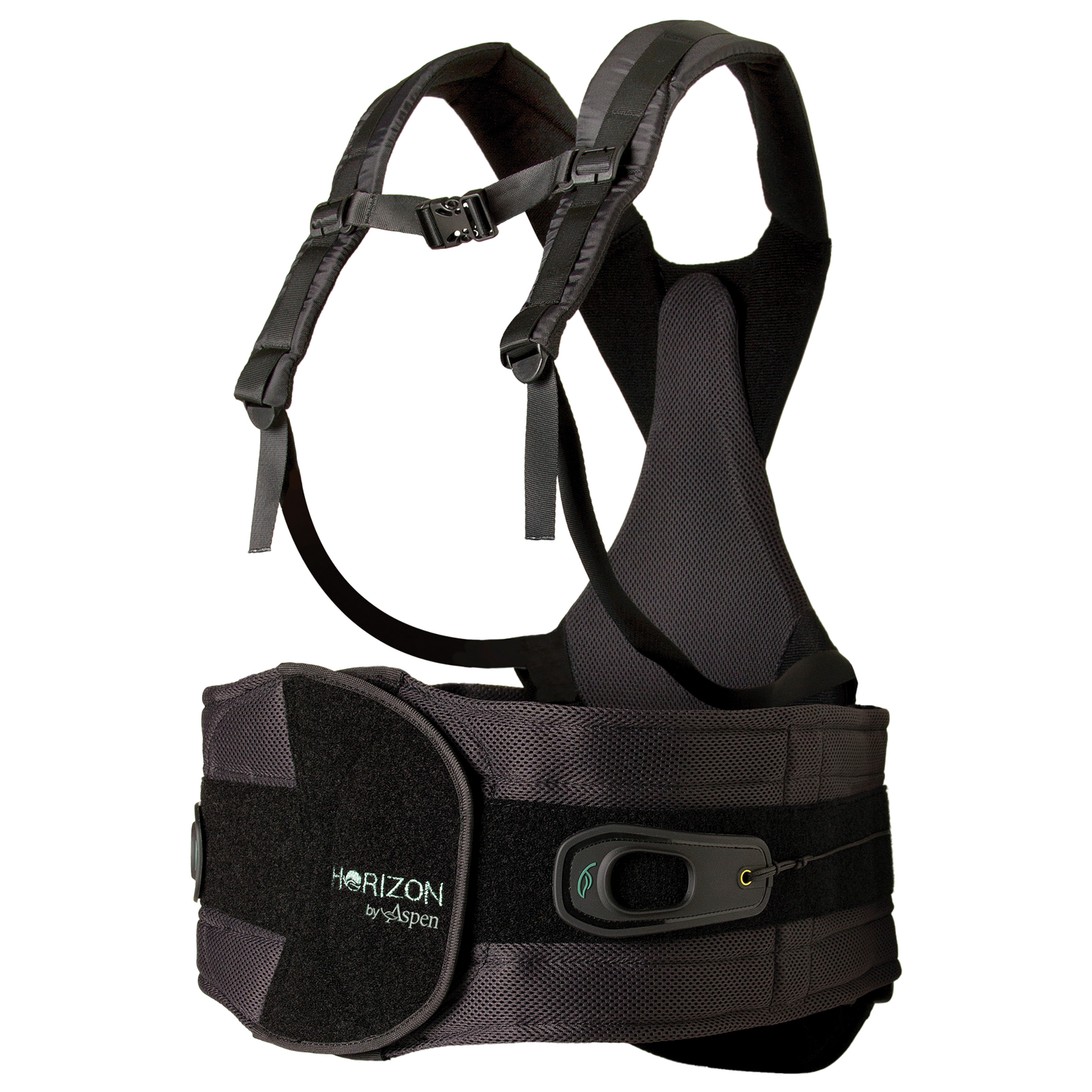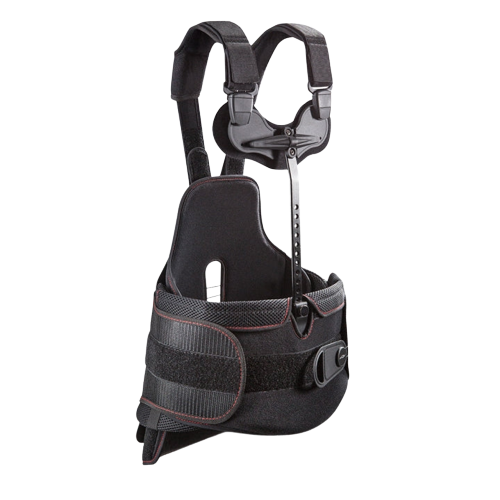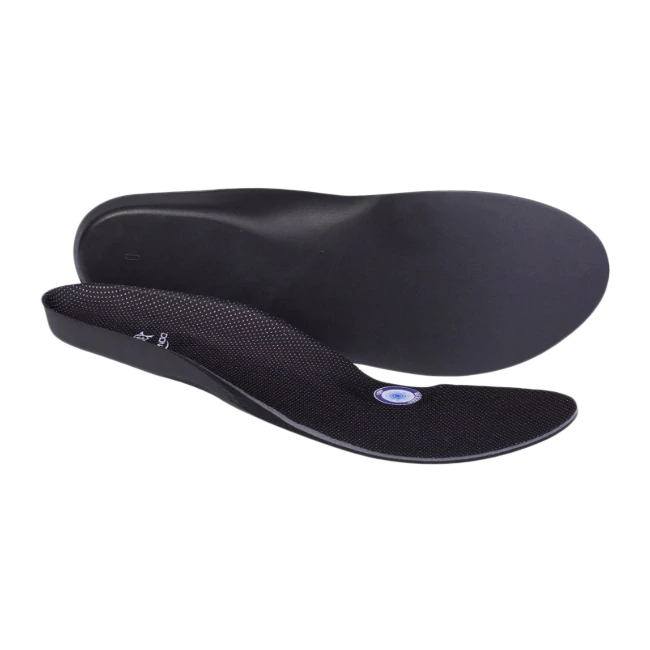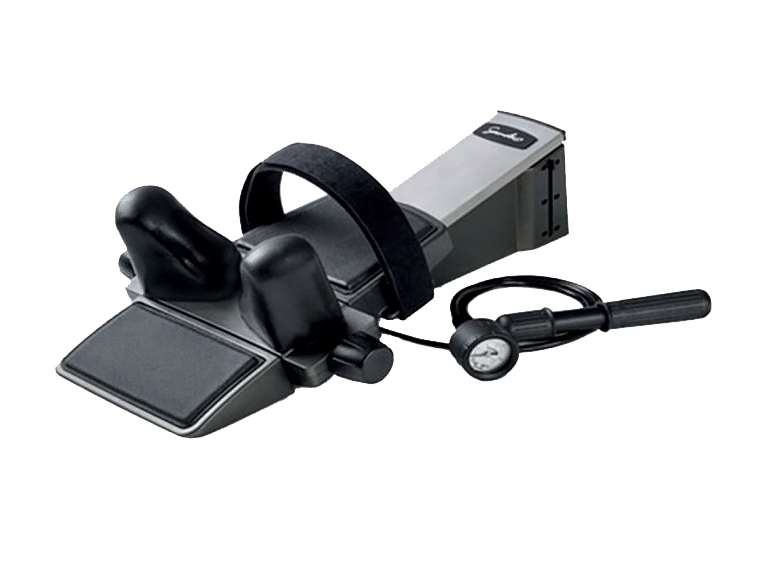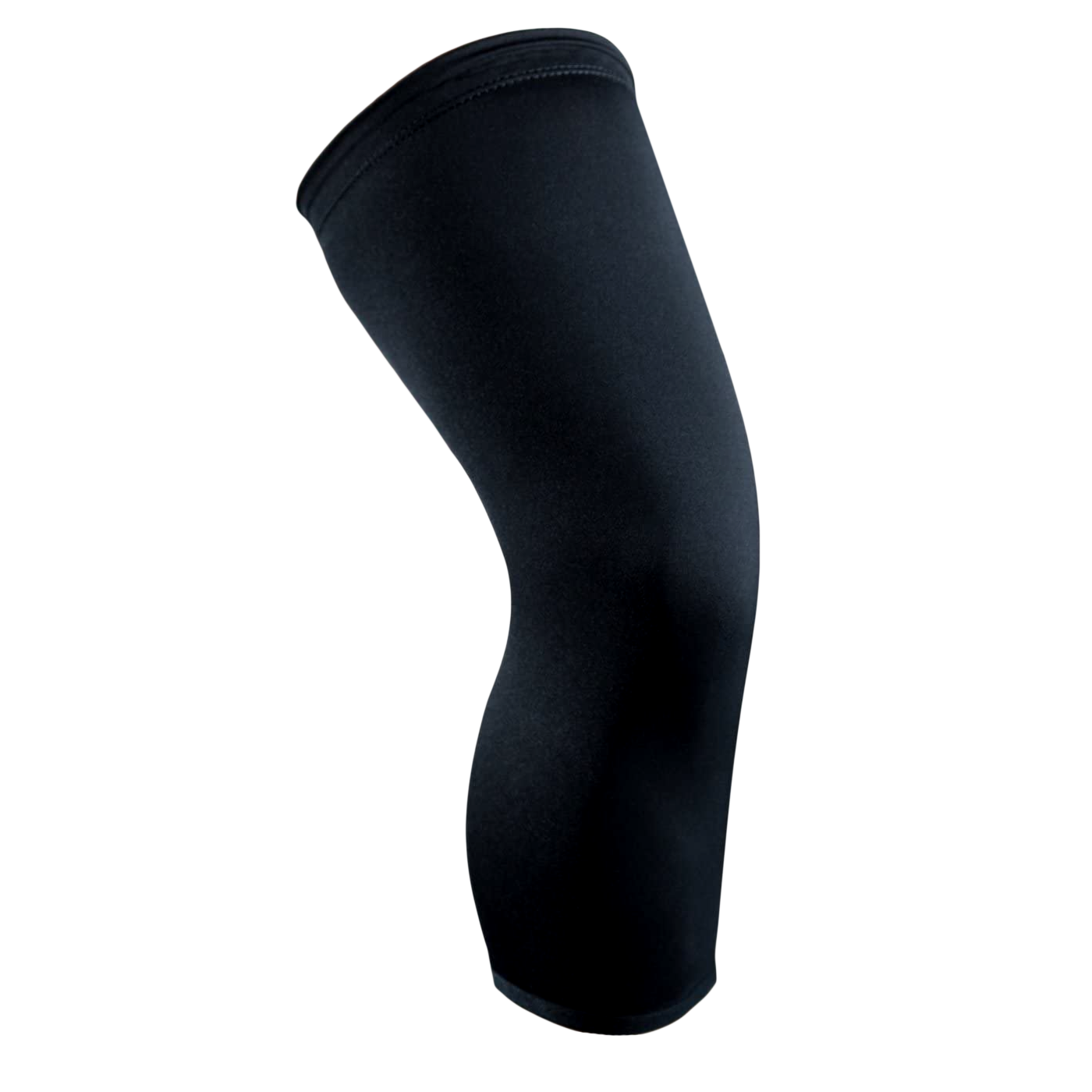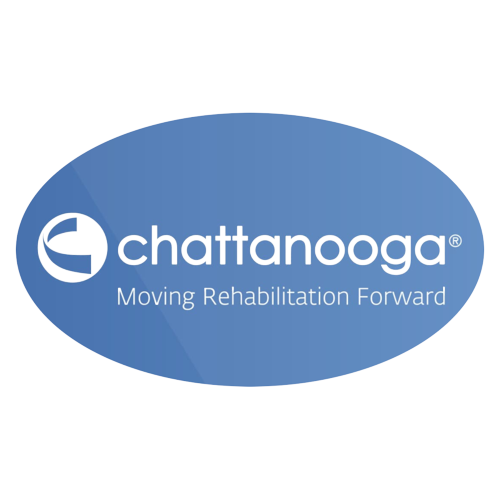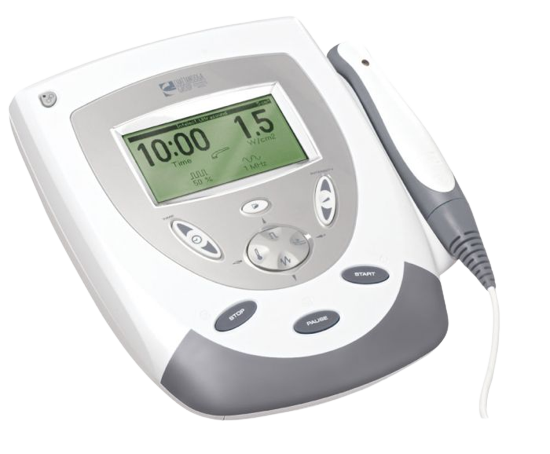
Key Takeaways:
- Start Gradually: Initiate shoulder rehab exercises once the acute phase of an injury subsides, focusing first on gentle range-of-motion movements before progressing to strengthening exercises.
- Consistency is Key: Establish a routine and set realistic goals to stay committed to your rehabilitation. Regular practice and monitoring progress can significantly enhance recovery.
- Listen to Your Body: Always pay attention to how your shoulder responds during exercises. Adjust intensity and frequency as needed, and consult healthcare professionals for personalized modifications to your rehab plan.
At OrthoBracing, we’re committed to helping you recover faster and more effectively with the best orthopedic products and solutions. Whether you’re recovering from surgery, dealing with a sports injury, or managing chronic shoulder pain, our range of braces and cold therapy machines can support you on your path to healing and getting back to the activities you love.
Shoulder injuries can be incredibly frustrating, especially when they impact your mobility and daily routine. Whether your injury is due to surgery, overuse, or a sudden accident, the rehabilitation process can feel slow. However, with the right rehab exercises, you can speed up your recovery, regain strength, and improve shoulder function more quickly.
In this article, we’ll walk you through the top shoulder rehab exercises that are designed to promote faster healing. From gentle stretches to strength-building movements, these exercises are essential for restoring mobility and getting you back to your regular activities sooner. Let’s dive into the steps that will help you recover stronger and faster!
When Should You Start Shoulder Rehab Exercises After An Injury?
The initiation of shoulder rehabilitation exercises after injury depends on various factors, including the severity of the injury, overall health status, and the recommendations of a healthcare professional. Some situations where you should consider shoulder rehab exercises are:
- Acute Injuries: For recent injuries, it is often advised to initially rest and apply ice to the shoulder to mitigate inflammation and pain. Once the acute phase subsides, gentle range of motion exercises can be gradually introduced.
- Chronic Conditions: Individuals with chronic shoulder conditions may benefit from commencing rehabilitation exercises sooner under the guidance of a healthcare professional.
- Surgical Procedures: Following surgical interventions, rehabilitation typically commences under the supervision of a physical therapist.
It is imperative to consult with your physician or physical therapist to ascertain the optimal time to initiate shoulder rehabilitation exercises. They can assess your specific injury, evaluate your progress, and provide personalized recommendations.
Key Benefits Of Shoulder Rehab Exercises For Injury Recovery
Here, we delve into the key benefits of incorporating shoulder rehab exercises into your recovery strategy.
Accelerated Recovery Time
One of the primary advantages of shoulder rehab exercises is the potential to shorten the recovery period. By carefully following a structured exercise program, patients can stimulate the healing process, reducing the time spent in recovery. Through gentle conditioning and controlled movements, these exercises help gradually return the shoulder to its pre-injury state or better, ensuring a faster return to daily activities.
Increased Range of Motion
Injury or surgery to the shoulder often results in a significant decrease in the range of motion, making it difficult to perform simple tasks like reaching overhead or behind the back. Shoulder rehab exercises are designed to safely and progressively increase flexibility in the shoulder, extending the range of motion over time. This contributes to a more efficient recovery process and enhances the overall functionality and mobility of the shoulder joint.
Strengthening Surrounding Muscles
Several muscles and tendons support the shoulder joint, playing vital roles in its movement and stability. These supporting structures can weaken following surgery or injury, leading to potential complications or slower recovery. Shoulder rehab exercises target these specific muscles and tendons, strengthening them and promoting a more stable and resilient shoulder joint.
Reduced Risk Of Future Injuries
By fortifying the shoulder's musculature and improving its flexibility and function, shoulder rehab exercises inherently decrease the risk of future injuries. A stronger, more adaptable shoulder is better equipped to handle the stresses of both everyday movements and more demanding physical activities, preventing re-injury or the onset of chronic shoulder issues.
Enhanced Pain Management
Lastly, engaging in shoulder rehab exercises can be an effective method for managing post-surgery pain. These exercises improve blood flow to the shoulder, contributing to the healing process and helping reduce pain and inflammation. By adhering to a guided exercise regimen, patients often report a decrease in pain levels, ultimately minimizing the reliance on pain medication throughout their recovery period.
Preparing For Your Shoulder Rehab: What You Need To Know
When embarking on a journey to recover from shoulder surgery, preparation is key. Understanding what you need and how to approach rehabilitation can significantly accelerate your recovery. Shoulder rehab exercises are an essential part of this journey. They are designed to restore strength, improve flexibility, and decrease pain, but knowing how to prepare for these exercises will set the foundation for success.
- Consult Your Healthcare Professional: Before starting any exercise regime, it is crucial to get a tailored plan from your healthcare professional. They understand your specific situation and can recommend shoulder rehab exercises that suit your individual needs, ensuring a safer recovery.
- Create a Comfortable Space: Recovery requires a calm and comfortable environment. Set up a dedicated space in your home to perform exercises without interruption. This area should be clutter-free and have enough room to move freely.
- Gather the Right Tools: We understand the importance of the right equipment for recovery. We carry the highest quality brands like AirCast, Breg, Chattanooga, DonJoy, and Exos, which are pivotal in your rehabilitation process. From supportive braces to cold therapy machines designed to help with pain relief and reduce inflammation, having the correct tools can make a significant difference in your recovery pace.
- Schedule Your Exercises: Consistency is key in rehabilitation. Scheduling your exercises throughout the week can help keep you on track. We recommend setting aside dedicated time slots each day for your shoulder exercises, ensuring you do not over-exert yourself while allowing ample time for rest and recovery.
- Listen to Your Body: While staying consistent, it’s equally important to listen to your body. Take a step back if you experience increased pain or discomfort during your exercises. Recovery is not a race; progressing safely is more important than rushing through the process.
- Stay Hydrated and Nourished: Proper hydration and nutrition play vital roles in recovery. Water helps flush out toxins and keeps the tissues hydrated, while a balanced diet rich in vitamins and minerals supports tissue repair and strengthens the body for the exercises.
- Maintain a Positive Mindset: Recovery can be challenging, but maintaining a positive outlook is essential. Celebrate the small victories and stay focused on your progress.
Gentle Shoulder Mobility Exercises To Begin Your Rehab Journey
After orthopedic surgery, starting on the right foot toward recovery is crucial. Shoulder rehab exercises are integral to regaining strength and mobility. Focusing on gentle, controlled movements can significantly enhance your recovery process. Here are some top shoulder rehab exercises designed to foster a faster recovery:
Pendulum Swing
Stand next to a table, leaning slightly forward with one hand on the table for support. Let your other arm hang down. Gently swing your hanging arm forward and back, then side to side, and finally in small circles, clockwise and anti-clockwise. This exercise encourages gentle motion in the shoulder joint, helping to reduce stiffness without exerting too much effort. Perform this for 1-2 minutes, focusing on smooth, pain-free movements.
Shoulder Blade Squeezes
Sit or stand with your arms relaxed at your sides. Gradually draw your shoulders back, squeezing your shoulder blades together. Hold this position for 5-10 seconds before releasing. Aim for 10-15 repetitions. This exercise helps reinforce the stability of your shoulder blades, which is crucial for upper body support and reducing the burden on your shoulder joints.
Arm Slide On Wall
Stand facing a wall with your feet about shoulder-width apart. Place your injured arm's palm, forearm, and elbow against the wall. Slowly slide your arm upwards as high as comfortable, then gently bring it down. The movement should be smooth, with the aim of a stretch without pain. Repeat 10-15 times, ensuring each movement is deliberate and controlled. This exercise aids in improving vertical mobility and gently stretching the shoulder muscles.
Towel Stretch
Hold a towel behind your back with one hand and gently pull the towel upwards with the other. This should stretch the shoulder of the arm holding the bottom end of the towel. Hold the stretch for 15-30 seconds and do 2-3 repetitions on each side. The towel stretch is excellent for increasing the range of motion, especially in the rotator cuff and shoulder region, without excessive force.
Crossover Arm Stretch
Pull one arm across your chest, just below your chin, aiming to stretch the shoulder without causing pain. Hold this position for 15-30 seconds and then switch arms. Repeat 2-3 times on each side. This exercise is beneficial for stretching the posterior and lateral aspects of the shoulder.
Strengthening Shoulder Muscles: Essential Exercises To Prevent Re-injury
The following exercises have been curated to support a faster and safer recovery.
- Isometric Shoulder Exercises: Isometric exercises involve muscle contractions without joint movement, providing a gentle way to start strengthening your shoulder. To perform them, stand near a wall and press your fist into the wall at shoulder height without moving your arm. Hold the pressure for 5-10 seconds and release. Repeat on all sides of the shoulder—front, back, and side.
- Wall Climbs: Stand facing a wall, place your fingertips on the wall at waist level, and slowly "walk" your fingers up the wall as high as you can comfortably go without pain, then back down. This exercise helps gradually increase shoulder flexibility and strength.
- External Rotation with a Resistance Band: Hold a resistance band with both hands, elbows at 90 degrees, and the band in front. Rotate the injured arm outward two to three inches and hold for five seconds. This exercise strengthens the rotator cuff muscles, which are essential for shoulder stability.
Progressing To Advanced Shoulder Rehab Exercises For Greater Stability
After a shoulder injury, it's crucial to gradually advance your rehabilitation program to ensure optimal recovery and stability. Once you've built a foundation with basic range-of-motion and strengthening exercises, you can incorporate more advanced movements. Here’s how to effectively progress to advanced shoulder rehab exercises.
Assess Your Progress
Before advancing to more challenging exercises, evaluate your current shoulder function. Consider the following:
- Pain Level: Ensure that you are experiencing minimal or no pain during your exercises.
- Range of Motion: Confirm that you have regained sufficient range of motion in your shoulder.
- Strength Levels: Ensure you can perform basic strengthening exercises with good form and without discomfort.
Warm Up Properly
Always start your workout with a proper warm-up to prepare your shoulder muscles and joints for more intense activity. Incorporate dynamic stretches and mobility exercises, such as arm circles and band pull-apart, to increase blood flow to the area.
Introduce Advanced Strengthening Exercises
Once you're ready, gradually add the following advanced exercises to your routine:
- Push-Ups: Start with wall push-ups, then progress to knee push-ups, and eventually full push-ups. This exercise strengthens the chest, shoulders, and triceps while promoting stability.
- Overhead Dumbbell Press: Stand or sit with a dumbbell in each hand. Press the weights overhead while engaging your core for stability. Keep your elbows slightly in front of your body.
- Single-Arm Dumbbell Row: Bend at the hips and rest one hand on a bench or sturdy surface. With the opposite hand, pull the dumbbell towards your hip, engaging your shoulder blades.
- Plank to Shoulder Taps: In a plank position, tap each shoulder with the opposite hand while maintaining your body alignment. This exercise builds core stability and shoulder control.
Incorporate Stability and Functional Movements
To further enhance shoulder stability, include exercises that mimic daily activities or sports movements:
- Medicine Ball Throws: Stand with your feet shoulder-width apart. Hold a medicine ball at chest level and throw it against a wall or to a partner, focusing on using your shoulders and core.
- Cable or Band External Rotations: Attach a resistance band to a stable surface at elbow height. Stand with your side to the band, pulling it away from your body to strengthen the rotator cuff.
- Turkish Get-Up: This full-body movement requires coordination and shoulder stability. Lie on your back, holding a weight in one hand, and rise to a standing position while keeping the weight overhead.
Prioritize Mobility and Flexibility
To prevent stiffness and enhance overall shoulder function, incorporate mobility and flexibility exercises:
- Sleeper Stretch: Lie on your side with the affected shoulder down. Use your opposite arm to gently press the forearm of the affected shoulder towards the floor.
- Cross-Body Stretch: Bring your arm across your chest and hold it with the opposite hand. This stretches the shoulder and improves flexibility.
Common Mistakes To Avoid During Shoulder Rehab Exercises
Recovering from orthopedic surgery requires dedication and an awareness of common pitfalls. Here are a few mistakes to avoid, ensuring your recovery path is smooth and efficient.
Neglecting Proper Form
Maintaining proper form during shoulder rehab exercises cannot be overstated. Incorrect forms can delay recovery and potentially lead to further injury. It's essential to understand each exercise fully and perform it as instructed. If in doubt, seek clarification from a healthcare professional or a physical therapist.
Rushing The Process
Recovery from orthopedic surgery is a marathon, not a sprint. While it's natural to desire quick progress, rushing through shoulder rehab exercises can be counterproductive. Allow your body the time it needs to heal by following prescribed routines at a pace that respects your body’s recovery process. Remember, quality trumps quantity when it comes to rehab exercises.
Overlooking The Importance Of Rest
While engaging in shoulder rehab exercises is crucial for recovery, giving your body ample time to rest is equally important. The healing process demands both activity and relaxation. Ignoring the body’s signals for rest can exacerbate pain and delay recovery. Allocate sufficient time between exercise sessions for your body to recuperate.
Skipping Warm-Up And Cool-Down Phases
Initiating exercises without adequately warming up can shock the system, leading to potential setbacks in recovery. Similarly, rounding off your routine without a proper cooldown can cause stiffness and discomfort. Incorporate gentle stretching before and after your shoulder rehab exercises to prepare your muscles for activity and to relax them afterward.
Failing To Adjust Exercises When Needed
Every individual’s path to recovery is unique. What works for one person may not suit another. It's critical to listen to your body and adjust exercises as necessary. If a particular movement exacerbates pain or discomfort, consult a healthcare provider to modify your routine. Tailoring the exercises to your thresholds can significantly enhance the effectiveness of your rehab regimen.
How To Stay Consistent With Shoulder Rehab Exercises For Long-Term Health
Recovery from orthopedic surgery necessitates dedication and consistency, especially when performing shoulder rehab exercises. These exercises are pivotal for restoring mobility, strength, and function to the shoulder post-surgery. Here are strategies to ensure consistency with shoulder rehab exercises for long-term health and recovery.
Set Realistic Goals
Begin by setting achievable goals that are aligned with your recovery timeline. Understand that recovery is a gradual process, and expecting too much too soon can lead to frustration and setbacks. Celebrate small victories along the way, such as an increase in the range of motion or a decrease in pain levels.
Establish a Routine
Incorporate your shoulder rehab exercises into a daily routine. Designate a specific time to devote to them, making them a non-negotiable part of your day. A consistent schedule helps form a habit, making it more likely you'll stick with them long-term.
Monitor Progress
Keep a record of your progress. This can include noting improvements in pain levels, increases in strength, and enhanced mobility. Monitoring progress not only provides motivation but also allows for adjustments to your exercise routine if progress plateaus.
Use Quality Support Products
Investing in high-quality orthopedic support products can significantly impact your comfort and recovery speed. Brands like AirCast, Breg, Chattanooga, DonJoy, and Exos offer innovative orthopedic surgery recovery and pain relief products. These products can support your shoulder during exercises, making the recovery process more efficient and comfortable.
Listen To Your Body
Pay close attention to how your body responds to rehab exercises. If you experience pain beyond mild discomfort, adjusting the intensity or frequency of the exercises is crucial. Consulting with your healthcare provider or a physical therapist to modify your exercise program can ensure you progress safely without risking injury.
Seek Support
Recovery can be challenging, and having a support system can make a significant difference. Share your goals with family and friends who can offer encouragement and hold you accountable. Additionally, consider joining a support group with others undergoing a similar recovery process. Sharing experiences and tips can provide additional motivation and insight.
Final Thoughts
Recovering from a shoulder injury can be challenging, but incorporating the right rehab exercises can make all the difference. Focusing on mobility, strengthening surrounding muscles, and maintaining consistency can accelerate your recovery and enhance your overall shoulder health. Listen to your body and consult healthcare professionals to tailor a rehabilitation plan that best suits your needs. With dedication and the right approach, you’ll be back to your normal routine in no time.
At OrthoBracing, we understand the challenges that come with post-surgical recovery. That's why we are committed to supporting your rehabilitation journey by offering an array of the highest-quality brands, including AirCast, Breg, Chattanooga, DonJoy, and Exos. These trusted brands have been selected for their reliability and effectiveness in aiding recovery, ensuring that you have access to the best resources available.
Incorporate these shoulder rehab exercises into your recovery regimen and trust the quality and support of OrthoBracing's carefully curated selection of recovery aids. Remember, taking the time to focus on your rehabilitation accelerates your recovery timeline and significantly improves the quality of your life post-surgery. We support you every step to full recovery and pain relief.
Read also:
- How To Use An Ice Machine For Shoulder Surgery
- How To Use An Ice Machine For Knee: Step-By-Step Guide
- How Long to Use Cold Therapy After Surgery
Frequently Asked Questions About Top Shoulder Rehab Exercises For Faster Recovery
How often should I perform shoulder rehab exercises?
Individuals recovering from orthopedic surgery are generally advised to follow a specific exercise regimen tailored to their recovery stage and overall health. Ideally, performing shoulder rehab exercises 2-3 times a day can significantly aid in the recovery process. However, it's crucial to follow the guidance of a healthcare professional who can recommend a schedule that's right for your specific condition.
Can shoulder rehab exercises help with rotator cuff injuries?
Yes, shoulder rehab exercises are particularly beneficial for recovering from rotator cuff injuries. These exercises are designed to restore flexibility, improve range of motion, and strengthen the muscles around the shoulder joint. With consistent practice, rehab exercises can accelerate recovery, helping you return to your daily activities sooner. Always ensure these exercises are performed under the guidance of a healthcare professional to ensure they are suitable for your condition.
Are there any shoulder exercises I should avoid to prevent further injury?
Certain exercises that involve overhead lifting, heavy weights, or rapid jerking motions should generally be avoided, especially during the initial stages of recovery. These movements can put undue stress on the shoulder joint and surrounding muscles, potentially exacerbating the injury. It's best to consult a physical therapist or healthcare provider to identify which exercises are safe for you and which should be avoided.
How can I modify shoulder exercises if they cause pain?
If a shoulder rehab exercise causes pain, stop immediately and consult with a healthcare professional. Modifications might include reducing the range of motion, performing the exercise without weights, or increasing the rest periods between exercises. Your therapist can provide alternatives or adjustments to ensure the exercises remain effective without causing discomfort.
What are some signs that I'm overdoing my shoulder rehab exercises?
Signs that you may be overdoing your rehab exercises include increased pain or swelling in the shoulder area, decreased range of motion, and heightened fatigue. If you experience any of these symptoms, it's important to reduce the intensity or frequency of your exercises and consult your healthcare provider. Listen to your body and remember that recovery is a gradual process.
How long should I continue shoulder rehab exercises after my injury has healed?
The duration of your shoulder rehab exercises depends on your injury's severity and overall recovery progress. Even after your injury has healed, continuing with a modified exercise program can help maintain shoulder strength and flexibility, potentially preventing future injuries. It's advisable to consult with your healthcare professional to determine the appropriate duration and progression of your exercise regimen.

